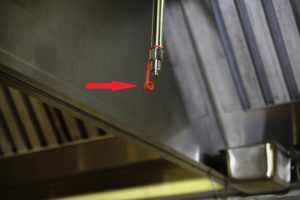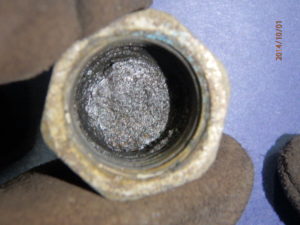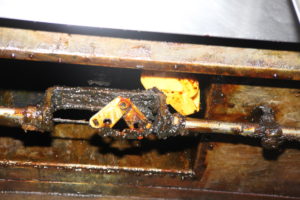All image credits: Scott Futrell
As food safety and restaurant managers, you are trained to create a safe eating experience for your guests. Delivering food safe for human consumption includes many variables. Sometimes overlooked are the grease and creosote cleaning and fire protection requirements in the commercial hoods above the cook line. As owners and managers you can do a variety of things to improve the safety for your staff and guests as well as protecting your business. That’s why Scott Futrell, fire protection engineer, discusses some of the fire safety issues owners and managers should consider. This is the second in a series of articles that will explore fire safety in the food preparation environment.
Fire safety in your kitchen and your restaurant
In the previous article, we looked into the statistics both nationwide and in Minnesota relating to fires in eating and drinking establishments. You can reduce the odds of a fire impacting your business if you frequently and routinely do several things.
It is very important that grease and creosote, if you use solid-fuel burning appliances, is kept off of and out of the hood, filters, plenums, ducts, fans and fire protection nozzles. Yes the nozzles. But more on that later on. The hoods, filters, plenums, ducts, and fans are required to be cleaned to bare metal semi-annually for most of you. Sometimes more frequently and sometimes annually. Many of you do the filters (weekly) and the exposed surfaces (daily), but how can you do that effectively when the piping isn’t stainless steel? See Figure 1. Minnesota Statute: 4626.0495 4-101.111 Non-food-contact surfaces.
What can you do to protect your investment or your facility?
Do you ever look behind the filters and into the exhaust ductwork? A spark, a flare up, or a grill cleaning fire that is too hot can ignite the grease that builds up causing a fire and a loss. See Figure 2 for the grease that remained the day after the professional cleaning, and yes, the cleaner left their flashlight in there.
On the other hand, that same grease gets into the fire suppression nozzles if the caps are off and then when the system needs to operate it can’t flow agent out of the grease plugged nozzles. See Figure 3 for a nozzle with the cap off and for a nozzle with grease caked inside of it post-fire.


Figure 3 – Nozzle Missing Cap and Grease in Nozzle
ABOUT THE AUTHOR: Scott A. Futrell, PE, FSFPE, CFPS, SET, CFEI, is a fire protection consultant with Futrell Fire Consult & Design, Inc., in Osseo, Minnesota and has over 40 years’ experience designing, specifying, and investigating fire protection system related losses.


